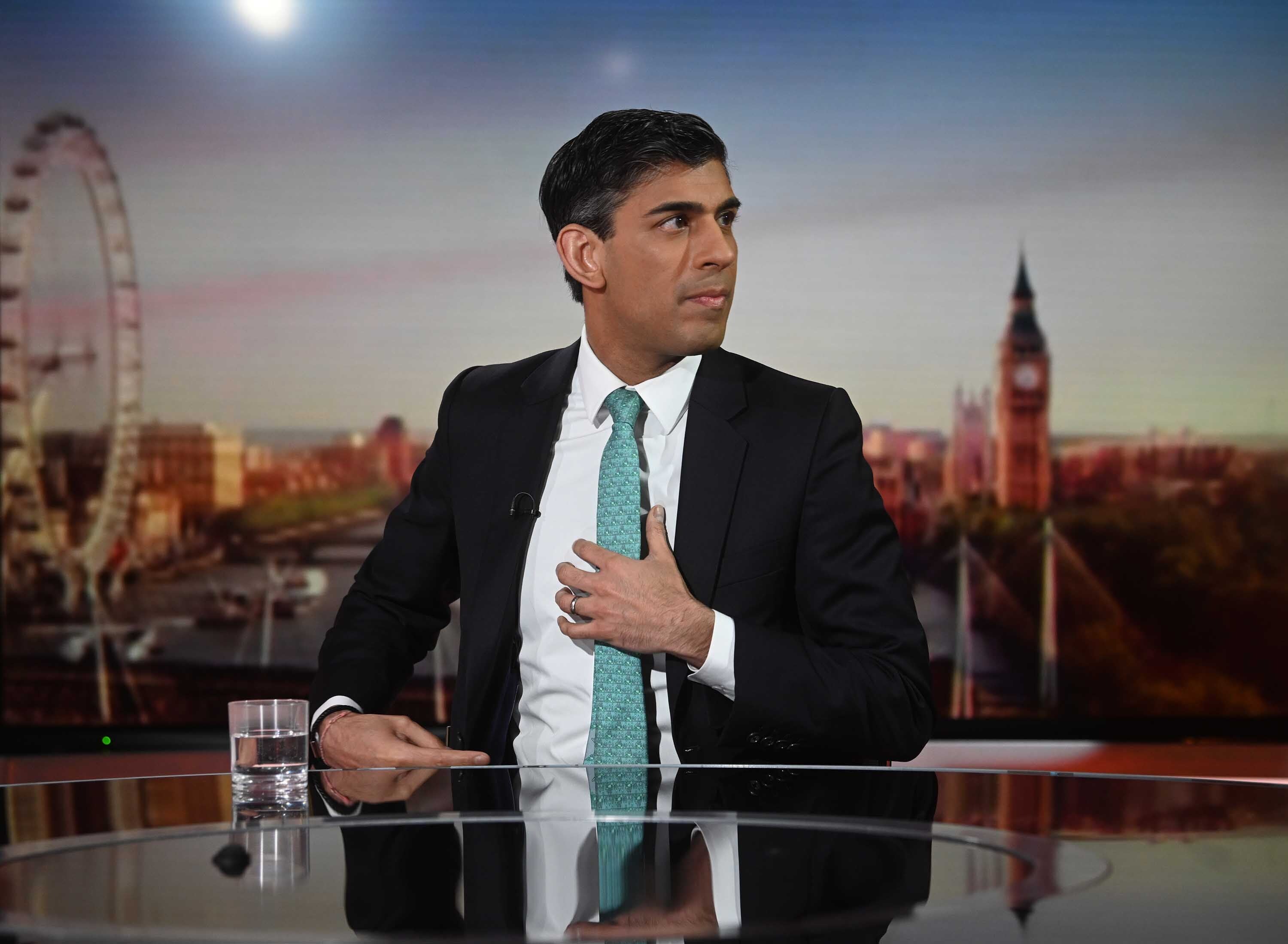Inflation hits 30-year high after rising 6.2% in a year
Cost-of-living crisis worsens ahead of Rishi Sunak’s Spring Statement

The squeeze on British households’ budgets has gathered pace ahead of Rishi Sunak’s Spring Statement, which is expected to only offer minor tweaks to ease the cost-of-living crisis.
Inflation reached 6.2 per cent in the 12 months to February, according to official figures from the Office for National Statistics (ONS), a fresh 30 year high.
The measure of price growth in the economy, the Consumer Prices Index (CPI) is set top 8 per cent next month when the new energy price cap shoots up by more than 50 per cent, the Bank of England said last week. It could stay at this level for for close to three months.
Despite mounting political pressure, the chancellor is expected to offer only small changes in order to support to households in his Spring Statement on Wednesday. Speculation suggests this could include a cut in fuel duty by as much as 5p.
Mr Sunak might also increase the threshold for National Insurance Contributions. Such a step would insulate some earners from the around 10 per cent increase in this tax the chancellor is set to introduce in April.
Rachel Reeves, Labour’s shadow chancellor, said: “With inflation spiralling even further today, the choice before the chancellor is clear.”
Mr Sunak could “choose an unfair tax rise on working people and business at the worst possible time” or “cancel his tax rise, and ease the cost of living hitting families” via a windfall tax on the profits on oil and gas producers, she said.
The squeeze on households is set to continue throughout this year and into 2023, economists have warned. Households are set to face the worst hit to real incomes in half a century as inflation outstrips pay growth.
The latest data “offers a foretaste of the huge income squeeze coming this year, with inflation likely to hit at least 8 per cent this spring – which could be the highest it’s been in 40 years – along with a second spike this autumn,” said Jack Leslie, senior economist at the Resolution Foundation, an economic think tank.
“This prolonged period of high inflation – which millions of people have simply never experienced before – is a complete disaster for living standards,” he said, adding that the chancellor should increase benefits in line with inflation to avoid a real terms loss of £10 billion for the UK’s poorest.
Last week, the Bank of England suggested that price growth could peak again in October, when the another fresh energy price cap is introduced. This could be an additional 35 per cent higher than the new cap in April. Analysts at investment bank Goldman Sachs predict energy bills could help push the pace of price growth as high as 9.5 per cent later this year.
A sharp rise in inflation “adds to the pressure on the chancellor to offset more of the cost of living crisis in today’s fiscal Spring Statement,” said Paul Dales, chief UK economist at Capital Economics, a consultancy.
Mr Dales cautioned that some of the statistics on price growth may have been driven higher because they are being measured in comparison with a period when Covid-19 restrictions were still in place. Still, there is “real inflation” in the economy that is set to be sustained. Food inflation will soon hit 6 per cent, he added.
“With petrol prices having risen by 50p since the start of the pandemic, a 5p fuel duty cut by the chancellor today would feel like fiddling at the edges,” Mr Dales said.
Pressures are not just being felt by consumers, input costs for businesses are also rising sharply.
Prices of goods leaving UK factories had reached their highest level 14 years, said Grant Fitzner, chief economist at the Office for National Statistics (ONS), said, adding that prices had risen for a host of services and goods in the economy.
“Clothing and footwear saw a return to traditional February price rises after last year’s falls when many shops were closed. Furniture and flooring also contributed to the rise in inflation as prices started to recover following new year sales,” he said.
In December last year, prices started to rise at the quickest pace since the early 1990s largely driven by energy costs and supply chain crunches.
Russia’s violent invasion of Ukraine has put additional pressure on energy costs, as the country is a major exporter of oil and natural gas.
Other countries are looking for alternative sources for the energy imports, pushing up demand further. The cost of an average tank of fuel has risen to around £90 up by around £33 compared to May 2020, according to the business department’s weekly road fuel data.
Russia and Belarus, which are both under heavy sanctions, also generate around 38 per cent of the world’s potash, a key input for fertiliser. Ukraine, one of the world’s largest exporters of grains, faces a severely disrupted harvest and sowing seasons for wheat and maize.
On Tuesday, environment secretary George Eustice warned that food prices could reach rise as much as 8 per cent in the coming months, as feed costs for chickens and other livestock rocket.
Subscribe to Independent Premium to bookmark this article
Want to bookmark your favourite articles and stories to read or reference later? Start your Independent Premium subscription today.

Join our commenting forum
Join thought-provoking conversations, follow other Independent readers and see their replies